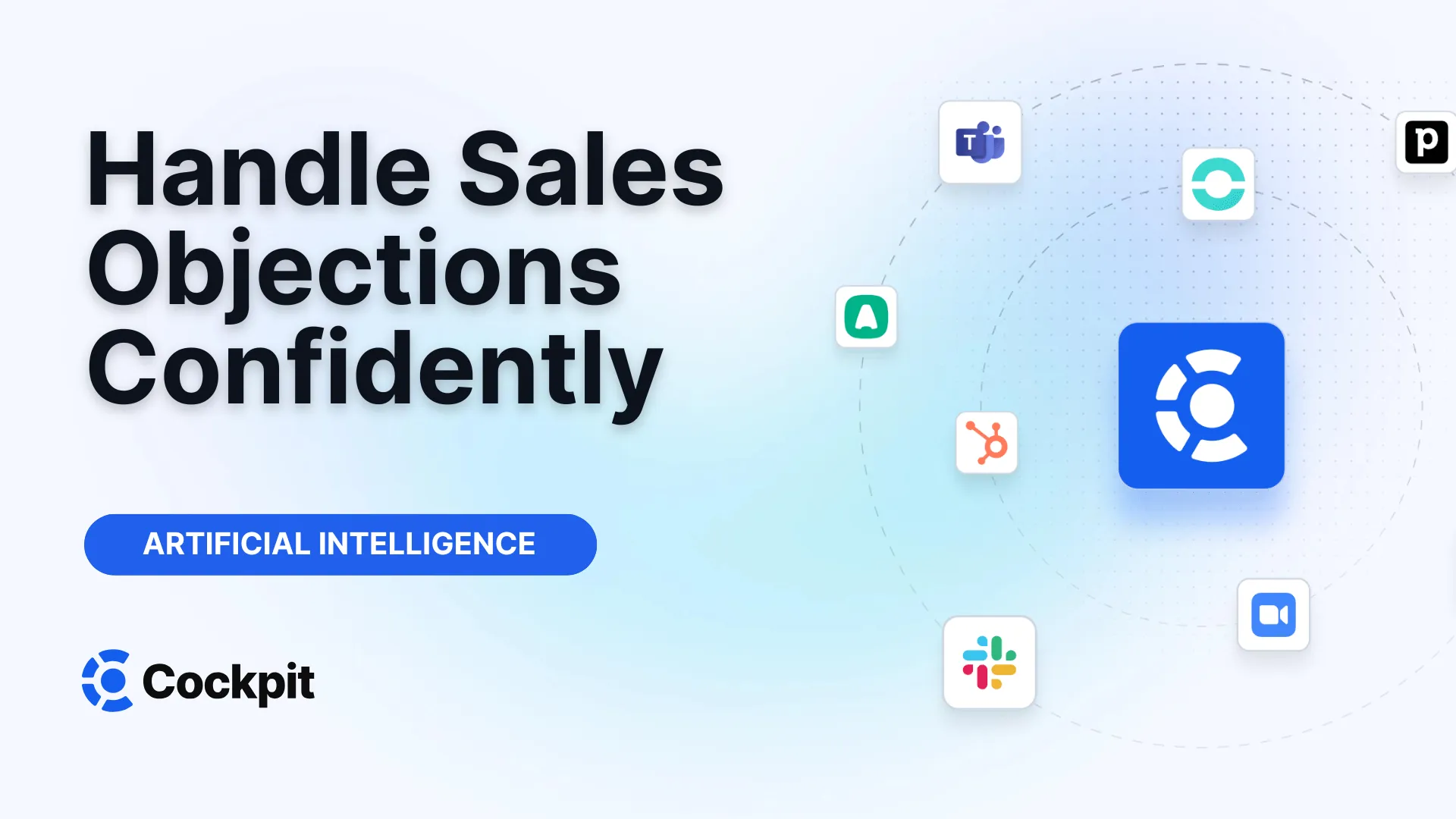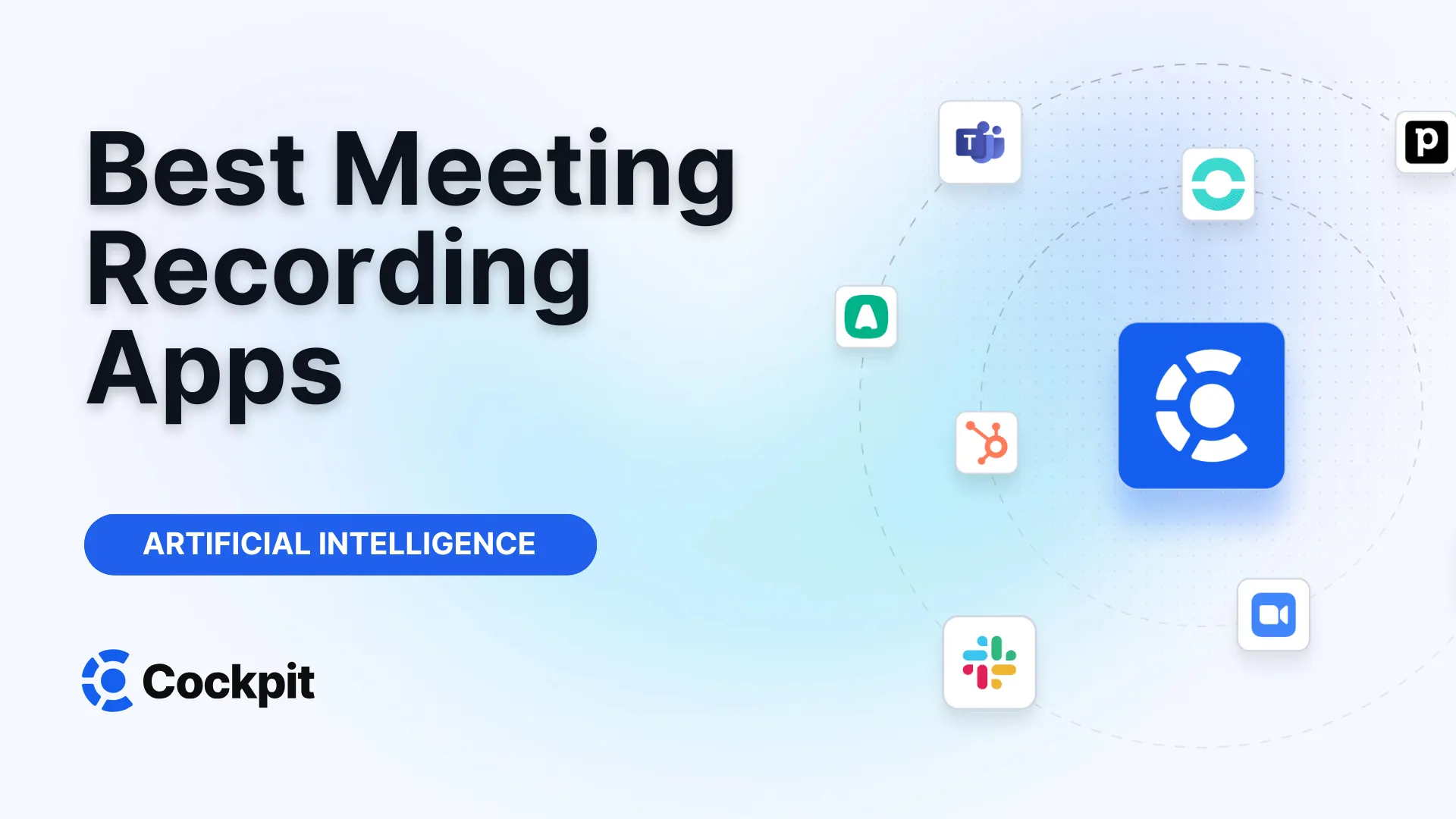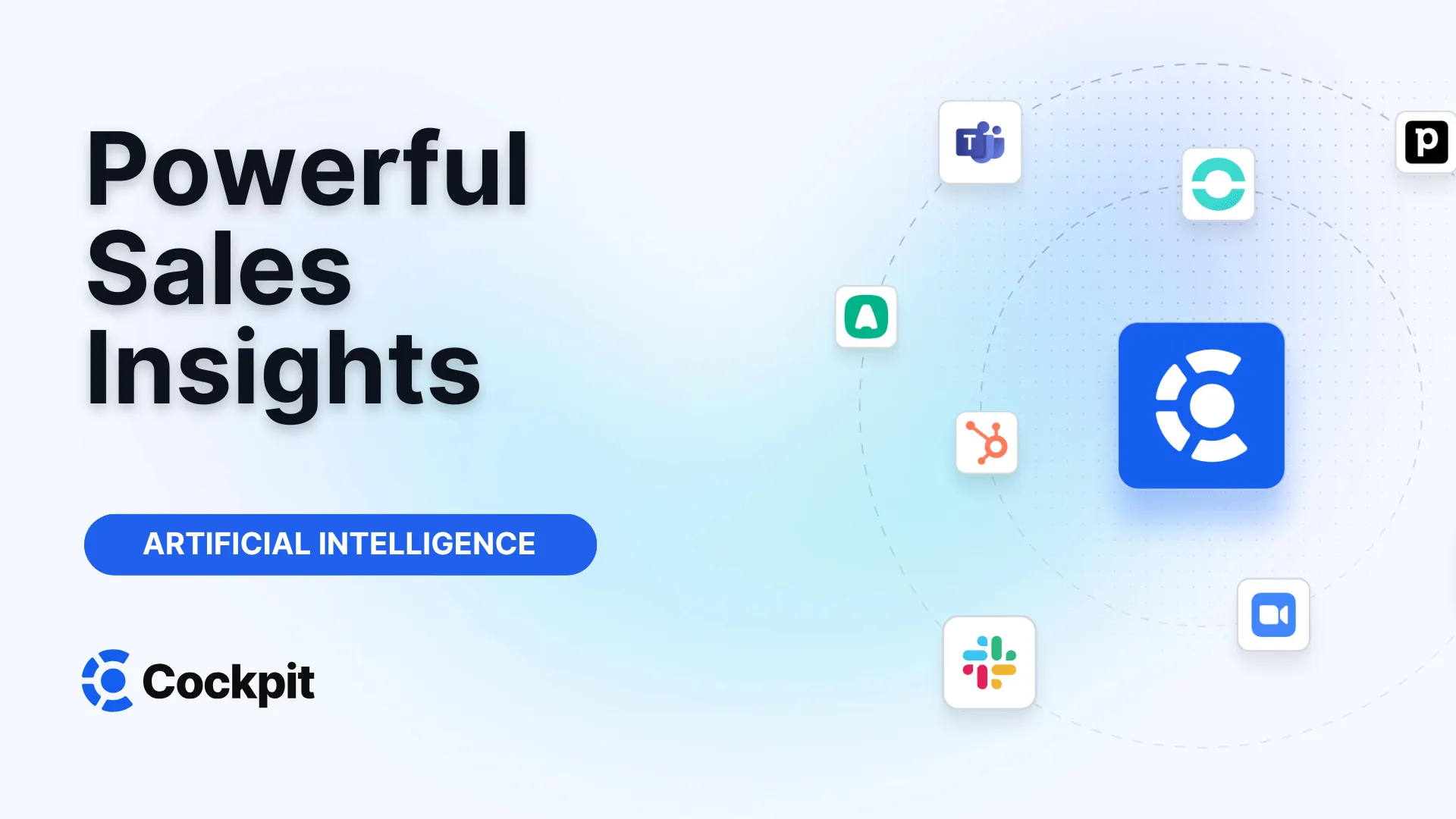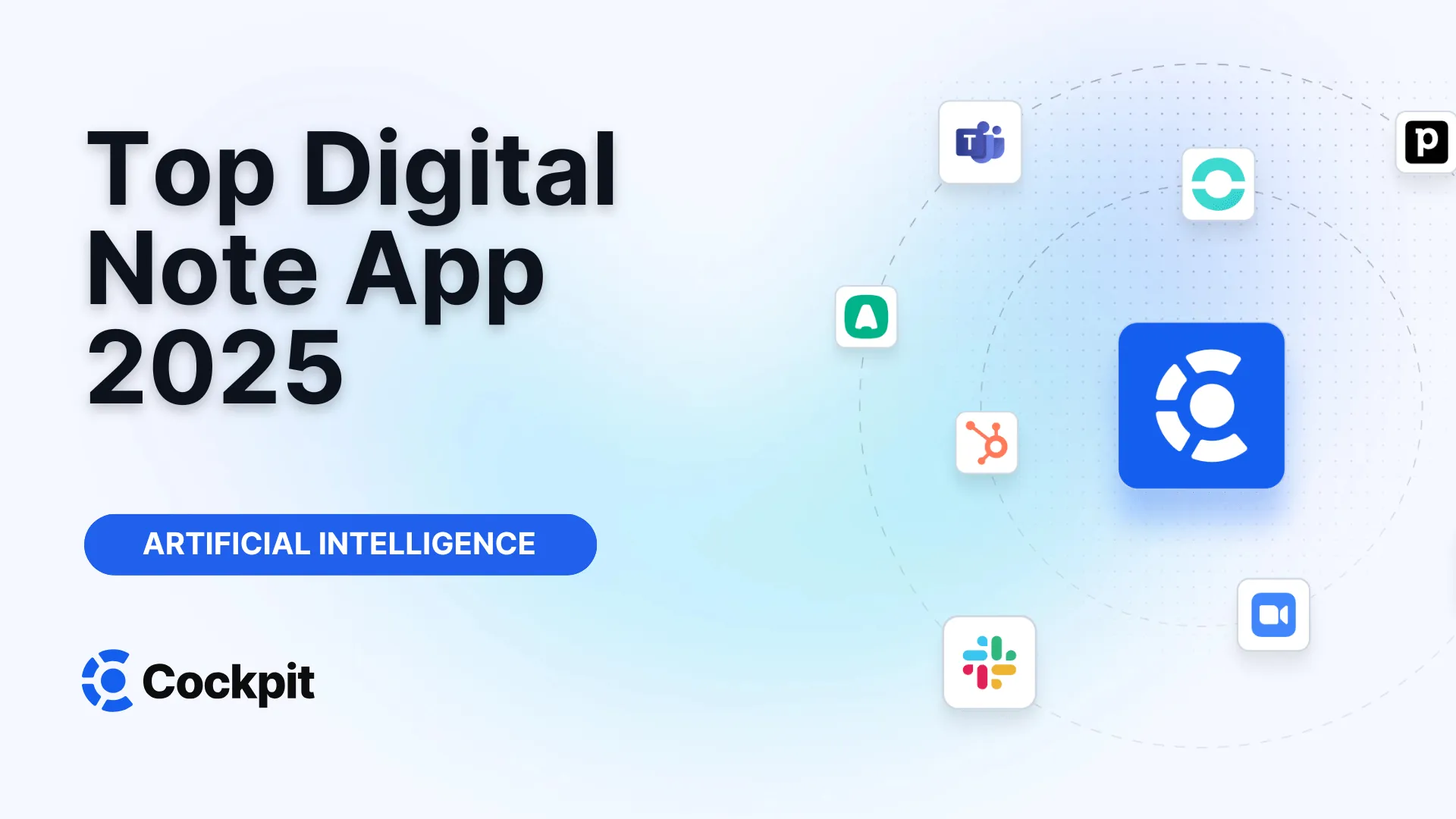Optimisez votre force de vente en quelques clics

Des milliers d'équipes commerciales améliorent leurs performances grâce à Cockpit. Pourquoi pas vous ?Des milliers d'équipes commerciales améliorent leurs performances grâce à Cockpit. Pourquoi pas vous ?
Explore CockpitSommaire
This sentence probably sounds familiar to you: “I like your solution, but it’s simply not in our budget right now…”? And what about: “We are already satisfied with our current provider”? If you work in sales, these phrases are likely the soundtrack of your days.
Every salesperson, from the most junior to the most experienced, faces them. These resistances, often perceived as rejections, can be discouraging. But what if you changed perspective? What if each objection was not a wall, but a slightly open door? An opportunity to better understand your prospect’s needs, dispel their fears, and demonstrate the real value of your offer. Mastering the art of handling objections is not just a skill, it’s what distinguishes good salespeople from great closers.
So, how can you turn these categorical "no"s into constructive discussions? How can you prepare to anticipate these obstacles even before they are raised? This is what we will explore.
What is a sales objection (and what it is not)?
Before diving into techniques, it is crucial to distinguish between an objection and a mere excuse.
A sales objection is a genuine concern raised by a prospect that constitutes a barrier to their buying decision. It is a clear indication that information or trust is missing to move forward.
- Example of an objection: “I don’t see how your product can integrate with our current tools.”
An excuse (or stalling tactic) is an excuse used by a prospect to end the conversation, often due to lack of time or interest.
- Example of an excuse: “I am too busy, please send me documentation by email.”
Although the technique to respond may be similar, the intention behind each is different. The objection is a call for dialogue; the excuse is an attempt to avoid it. A smart salesperson learns to identify both in order to adapt their strategy. A sincere objection is a sign of interest; a prospect with no intention to buy will not even bother to raise one.
The four main categories of sales objections
Most hesitations you will encounter can be classified into four main categories, often summarized by the acronym BANT (Budget, Authority, Need, Timing). Understanding them helps you quickly identify the nature of the blockage.
Lack of budget
This is the most common objection. “It’s too expensive” or “We don’t have the budget” are phrases every salesperson has heard. Behind this statement lie several possible realities:
- The price is objectively beyond the company’s means.
- The prospect does not perceive enough value to justify the cost.
- The budget is allocated to other priorities.
Your role is not to immediately lower your price, but to turn the conversation from cost to return on investment (ROI).
Lack of authority
“I need to discuss this with my superior.” This objection indicates that your contact is not the final decision-maker. It can also mean they lack confidence in your solution to defend it internally. Your goal is to turn this contact into a champion for your product. Equip them with the right arguments, case studies, and a clear value proposition so they can convince internally.
Lack of need
“We are satisfied with our current way of working” or “I don’t see how this would help us.” This objection often reveals that the prospect has not yet realized the extent of their problem or does not see how your solution can address it. It is a great opportunity to ask open questions to help them connect their daily challenges with the value you bring.
Lack of urgency
“It’s not a priority for us right now.” The prospect may acknowledge the problem but puts it at the bottom of their task list. Your mission is to create a sense of urgency. Explore the hidden costs of inaction: how much time, money, or opportunities do they lose each month by not addressing this issue?
The method to handle objections: Listen, Validate, Explore, Respond
Responding impulsively to an objection is the fastest way to alienate your prospect. Instead, adopt a structured four-step approach that fosters dialogue and trust.
Step 1: Active listening, your best asset
When a prospect raises an objection, the first rule is to be silent and listen. Really listen. Don’t prepare your response while they speak. Focus on their words, tone, and underlying concerns. Interrupting a prospect signals that you care more about your pitch than their problems.
Active listening is a fundamental skill. To achieve it, you must be 100% present in the conversation. This is where tools like ours come into play. By automatically recording and transcribing your calls, you no longer need to worry about manual note-taking. You can fully concentrate on what your prospect is saying, catch every nuance, and ask relevant questions, knowing that every detail is preserved for you.
Step 2: Validation and paraphrasing to build trust
Once the prospect has finished, do not jump to respond. Validate their concern. This does not mean you agree, but that you acknowledge the legitimacy of their point of view.
- “I completely understand your concern about the budget.”
- “That’s an excellent question regarding integration. It’s an important point to clarify.”
Then, paraphrase the objection in your own words: “If I understand correctly, your main concern is that implementing our solution would be too complex for your current technical team, is that right?” This shows that you listened and ensures you are addressing the correct problem.
Step 3: Exploration to uncover the real objection
The initial objection is often just the tip of the iceberg. Ask open questions to dig deeper.
- Price objection: “When you say it's too expensive, what are you comparing it to?”
- Competition objection: “You’re working with [Competitor X], that’s great. What do you appreciate most about them? And are there areas where you’d like to see improvement?”
This exploration phase may reveal that the real fear is not price, but fear of change, or that dissatisfaction with the competitor is deeper than it seems.
Step 4: Targeted response and confirmation
Only after fully understanding the problem can you respond effectively. Your answer must be targeted, precise, and value-focused. Use social proof, case studies, or data to support your points.
Finally, conclude by asking for confirmation: “Does this solution, with integration assistance from our technical team, address your concern? If we resolve this point, are there other obstacles to our collaboration?” This last question ensures there are no hidden objections.
Catalogue of common sales objections and how to respond
Here is a non-exhaustive list of the most frequent objections, grouped by theme, with response suggestions.
Price and budget-related objections
| Objection | Suggested response |
|---|---|
| 1. “It’s too expensive.” | “I understand budget is a crucial point. Could we set price aside for a moment and ensure our solution truly solves [problem X] for you? Often, the cost of doing nothing is much higher. By the way, clients like [Client Y] have seen a Z% ROI in 6 months.” |
| 2. “We don’t have the budget for this year.” | “I often encounter this situation at the end of budget cycles. If the budget were available, would our solution be a priority for you? Let’s schedule a follow-up early next quarter when new budgets are allocated.” |
| 3. “I can find a cheaper option elsewhere.” | “You’re right, cheaper solutions exist. However, they usually don’t include [Feature A] or the level of support we provide. The real question is which solution will bring you the most long-term value, not just the lowest price today.” |
| 4. “I don’t want to commit to a long contract.” | “I understand that commitment can be intimidating. That’s why we offer various options. Let’s discuss contract terms that would be more comfortable for you. Perhaps a quarterly option would be a good start?” |
Competition and trust-related objections
- 5. “We already work with [Competitor X].”
Response: “That’s great news; it means you already recognize the importance of solving [problem]. Without criticizing their work, what works well for you and where do you see room for improvement? We differentiate ourselves particularly on [points A and B].” - 6. “I read a bad review about your company.”strong>
Response: “Thank you for your honesty. Transparency is important to us. That review concerned [past issue] that we have since resolved by [implementing this solution]. I can also share a case study from [recent client] showing how we manage this today.” - 7. “I’ve never heard of you.”strong>
Response: “That’s understandable. We may be better known in [other sector/country]. Simply put, we help companies like yours to [value proposition in one sentence]. We work with firms such as [names of 2-3 well-known clients].”
Expert advice
Never disparage a competitor. It makes you appear unprofessional and insecure. Focus on your own strengths and how you can deliver more value. Let the prospect draw their own conclusions.
Need and relevance-related objections
- 8. “We don’t have this problem.”
Response: “That’s interesting. To make sure I’m not mistaken, how do you currently handle [process related to your solution]? What are your main objectives in this area over the next 6 months?” - 9. “I don’t see the potential ROI.”
Response: “That’s a legitimate concern. Let me show you. Based on what you told me about [key prospect metric], a 10% improvement with our tool would represent a saving/gain of X €. Would you be available for a 15-minute simulation next week?” - 10. “It’s too complicated for my team to implement.”
Response: “Ease of use is one of our priorities. What seems complicated to you specifically? I can show you how the onboarding process works. Additionally, each client benefits from personalized support to ensure a fast and effective adoption.”
Objections that are actually excuses
- 11. “Just send me documentation.”
Response: “Certainly. To make sure I send you the most relevant information, could you tell me which aspect interests you most? Is it more [benefit 1] or [benefit 2]?” - 12. “Call me back next quarter.”
Response: “I’ll note that in my calendar. Just so I can prepare for our next conversation, what will your priorities be then? Do you think the project [your solution] will have a better chance of being approved?” - 13. “I’m very busy right now.”
Response: “I completely understand and don’t want to take up too much of your time. I can explain the essentials in 2 minutes flat. If you’re interested, we can schedule a proper meeting. Otherwise, I won’t bother you anymore. Does that work for you?”
Anticipate to better manage: How to prepare for objections
The best way to handle objections is not to be surprised by them. Thorough preparation will give you a significant advantage.
- Research your prospect: Before each call, learn about the company, its sector, current challenges, and your contact. The more you know, the better you can anticipate their concerns.
- Create an "objection bible": List all objections you and your team regularly face. For each, write several possible responses. This exercise will help you internalize the best arguments.
- Practice, practice, practice: Role-playing is an excellent way to train. Put yourself in situation with a colleague and test your responses. This will make your reactions more fluid and natural in real situations.
Note
Preparation cannot be improvised. It relies on analyzing what works and what doesn’t. This is where our AI Playbook becomes a strategic ally for managers. By objectively analyzing hundreds of calls, AI can identify the most recurring objections for a given market, the responses from top salespeople that lead to closure, and the moments when new employees struggle. This allows the creation of highly personalized, data-driven coaching sessions, transforming objection handling from an art into a science.
Objections are not obstacles but milestones on the path of sales. They are signs of an engaged prospect who needs reassurance. By adopting a posture of listening, empathy, and problem-solving, you will not just overcome these resistances; you will build stronger and longer-lasting client relationships. Every "no" is an opportunity to learn and improve. So next time you hear an objection, smile: the real conversation is just beginning.
How to know if an objection is a definitive refusal?
That’s an excellent question. The general rule is that if a prospect repeats the same objection two or three times, even after you have tried to address it thoroughly, it is likely a real blocking point and potentially a firm refusal. For example, if despite demonstrating ROI and flexible payment options, the prospect insists “We absolutely have no budget,” it is time to respect their position. A good salesperson knows when to push and when to withdraw. Pushing too hard after a clear and repeated “no” risks harming your reputation and closing the door to future opportunities. Trust your intuition: if the conversation becomes a battle, it is often wiser to politely conclude and move on to another opportunity.




